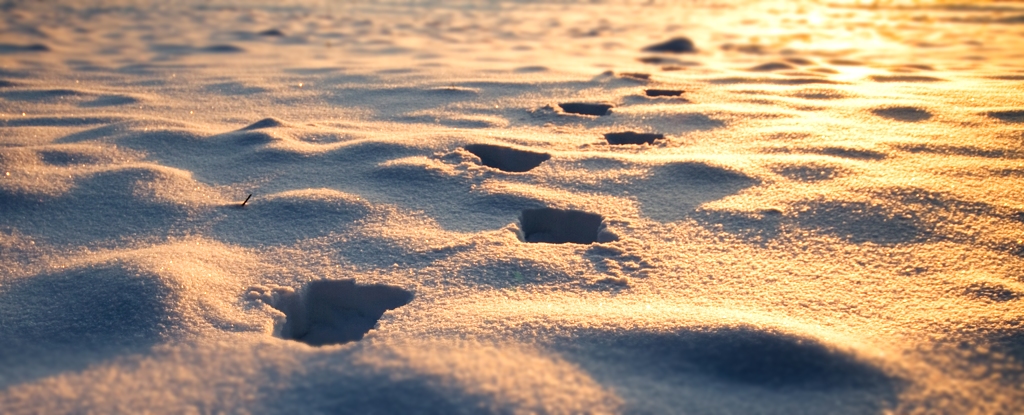
An icy thoroughfare might have provided ancient explorers with a direct route from Siberia to the New World over 10,000 years before the estimated arrival of America’s First Nations people.
Findings from studies on sediment and fossilized marine life, conducted by researchers from the US Geological Survey, Woods Hole Oceanographic Institution, and Oregon State University, suggest that sea ice could have significantly facilitated an early migration.
During a presentation at the American Geophysical Union Annual Meeting (AGU23) in San Francisco, geologist Summer Praetorius from the US Geological Survey proposed that extensive winter ice surfaces might have played a crucial role in aiding travel during periods when boat navigation would have been excessively hazardous.
For nearly five decades, archaeologists commonly considered the Clovis people as the original pioneers of the North American continent. Drawn by the allure of fertile hunting grounds, families journeyed across lands briefly exposed by retreating ice, connecting Siberia with Alaska around 13,000 years ago.
The hypothesis had strong support. A few skeletal remains and similarly-styled projectile tips discovered alongside now-extinct megafauna provided tangible proof of their existence, and climate data reinforced a timeline suggesting relatively straightforward movement between the land masses.
However, a sequence of findings in recent decades has consistently undermined confidence in the Clovis-first hypothesis, extending the timeline for human arrival in the Americas to potentially more than 25,000 years ago, reaching as far back as the Last Glacial Maximum.
An intriguing question revolves around how these ancient travelers undertook the challenging journey. Although sea levels were likely low enough to expose a solid bridge across the top of the world as far back as nearly 36,000 years ago, the rugged covering of snow and glaciers on the landscape would have posed a significant challenge, potentially making it a strenuous or impassable route.
As glaciers started to recede, a narrow strip of coastal ecosystems could have supplied communities with resources and served as a navigable route by boat. The presence of a 14,000-year-old settlement on Canada’s western coast further strengthens the possibility that pre-Clovis people were gradually making their way along the water’s edge.
The ‘kelp highway hypothesis’ assumes that marine technology was sufficient for safely transporting families across thousands of kilometers in a harsh, cold marine environment. The feasibility of this possibility may have largely depended on the timing of the journey.
As per a 2020 study, opportunities for migration might have closed during crucial warm periods when accelerated melting could have altered currents unfavorably for migrating paddlers, particularly as floods of freshwater flowed into the ocean.
As per Praetorius and her team, an examination of climate models validates that high winds and lower sea levels around 20,000 years ago would have doubled the strength of ocean currents compared to today, posing additional challenges for potential mariners.
However, records also indicate that substantial areas of winter sea ice likely persisted until approximately 15,000 years ago, providing a potential pathway for migrants to walk or even sled along.
“We identify 24.5 – 22 [thousand years ago] and 16.4 – 14.8 [thousand years ago] as the most likely periods to accommodate early migration along the Alaskan coast, possibly aided by movement and subsistence on a “Sea-ice Highway”,” the researchers write in their report.
However, this doesn’t dismiss the possibility of sea travel during periods when favorable currents existed. It also doesn’t constitute definitive evidence that such journeys occurred.
Considering emerging evidence suggesting humans might have journeyed as far south as New Mexico over 20,000 years ago, it’s reasonable to assume that their ancestors found a relatively safe and open path for the monumental leap between worlds.
This study’s findings were shared at the American Geophysical Union Annual Meeting in San Francisco on December 16.





